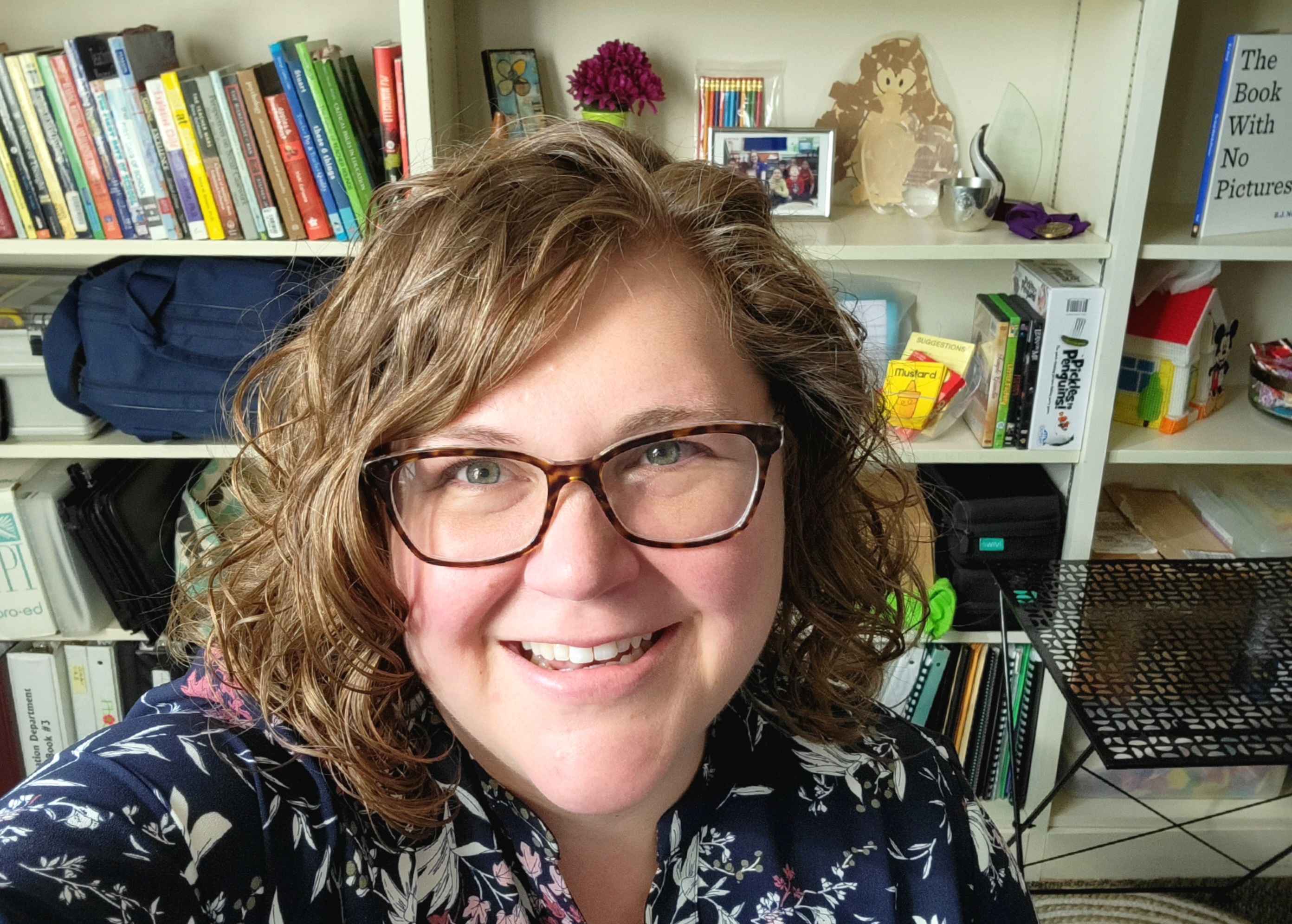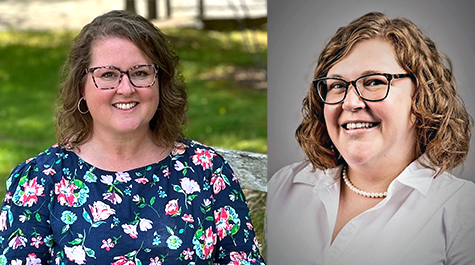Two W&M students Sharice Adkins Ph.D. ’23 and Amelie Smucker Ph.D. ’23 joined the faculty at Virginia universities
Two doctoral candidates in the Educational Policy, Planning & Leadership with a concentration in Curriculum and Learning Design Ph.D. program have received non-tenured faculty roles at universities in Virginia. Sharice Adkins Ph.D. ’23 accepted a position as a Visiting Assistant Professor of Education at the University of Mary Washington and Amelie Smucker Ph.D. ’23 became the Field Placement Coordinator and Adjunct Instructor of Education at Sweet Briar College.
Adkins and Smucker are both in the first cohort of the newly designed Curriculum & Learning Design (CLD) program, a blend of two previous programs: Curriculum & Education Technology and Curriculum Leadership. The new CLD program, which launched in 2019, anchors in educational design as a focus for instruction, assessment, and educational technology. The students in the first cohort of the new CLD program have finished their coursework and are now working on their dissertations. Although many students return to the K-12 field after their coursework is finished, the new CLD program prepared Adkins and Smucker for faculty positions in higher education.
Professor Chris Gareis, Ed.D., who coordinates the CLD program, shares, “Amelie and Sharice are excellent examples of mid-career professionals who made a commitment to full-time doctoral studies. This couldn’t happen without the financial support of our graduate assistantships in the William & Mary School of Education. What’s more, Amelie and Sharice have each intentionally, enthusiastically, and effectively leveraged their prior professional experiences with their doctoral studies as well as with opportunities to engage with faculty and other doctoral students in ongoing and innovative research and service projects. This combination of school-based experience, a William & Mary education, and applied scholarship makes them a ‘triple threat’ when pursuing their respective roles as university faculty. Their impact on their students, colleagues, and the profession will be important and lasting, which is precisely our aim in the educational leadership doctoral programs.”

In her new role, Adkins teaches three courses at the University of Mary Washington and supervises
interns who are placed in local schools. She teaches Introduction to Research, Language and Literacy Across the Curriculum, and The Teaching of English. She is also part of a team of faculty piloting a new professional development program for local teachers, where she facilitates the support of social emotional learning and math instruction in two schools.
Smucker is teaching the Licensure Examination Preparatory  Course while supporting an Honors student’s research and next spring will teach Introduction to Special Education while supervising student teachers. As the Field Placement Coordinator, she supervises 35 students, eight of whom are student teachers. She arranges the students’ placements in local schools, manages program and student data, and monitors students’ growth.
Course while supporting an Honors student’s research and next spring will teach Introduction to Special Education while supervising student teachers. As the Field Placement Coordinator, she supervises 35 students, eight of whom are student teachers. She arranges the students’ placements in local schools, manages program and student data, and monitors students’ growth.
Adkins finds herself thinking about her courses at William & Mary and uses her knowledge to both improve her teaching and support her current students, saying, “When I think about designing learning, I am pulling those things into my instruction and teaching about them.” Her experiences at W&M also helped prepare her for her new role, as she describes, “At W&M, in my graduate assistantship, I was a teaching assistant and adjunct taught a class. I had prior K-12 and adult learner experience, but the university level is different. The opportunity to teach college level courses was the biggest experience at W&M that prepared me for this.”
Smucker also credits the knowledge she gained from William & Mary and the experiences as incredibly helpful in her new position. She shares, “Pockets of coursework are now weaving together seamlessly for me as I work in higher education on projects such as the accreditation process Sweet Briar is going through right now. I am pulling from my courses in planning, curriculum, and evaluation to help make updates to the student teacher evaluation system and the curriculum alignment within the program.” In terms of experiences, Smucker explains how she was able to use her graduate assistantship to learn how to develop courses and syllabi saying, “At W&M, I saw the process behind the products and took time with the professors to learn how they make decisions. And that has made my job now much easier.”
Both Adkins and Smucker have dreams to continue in the education field. Adkins shares, “My goal is to impact and change education. Every week, I stand in front of 50 students, who will go into 50 different classrooms, possibly in 50 different school divisions, and this is where I make my impact.” She also sees herself working on designing curriculum for a school district or consulting in the future. Smucker hopes to become a tenure track faculty member in a place that allows her to balance teaching and being able to engage in research with students.
For those hoping to follow in their footsteps, Adkins encourages students to take advantage of opportunities to teach classes, be a guest lecturer, apply for jobs, and not be afraid to put oneself out there. Smucker advises students to seek opportunities in coursework, volunteer for research, and network. “Networking turned out to be far more important than I thought it would be. So stay in touch with people, build a network of colleagues in different areas, and stay connected to your W&M colleagues past graduation” shares Smucker.
As final thoughts, Adkins advises, “There is always a learning curve, because everywhere has its own way of doing things. But people have done this before. So don’t assume people think you don’t know what you are doing.” In reflecting on her journey from W&M’s CLD program to now, Smucker shares, “It’s just incredible and it was so worth it.”
Learn more about the Curriculum & Learning Design program at the School of Education.
